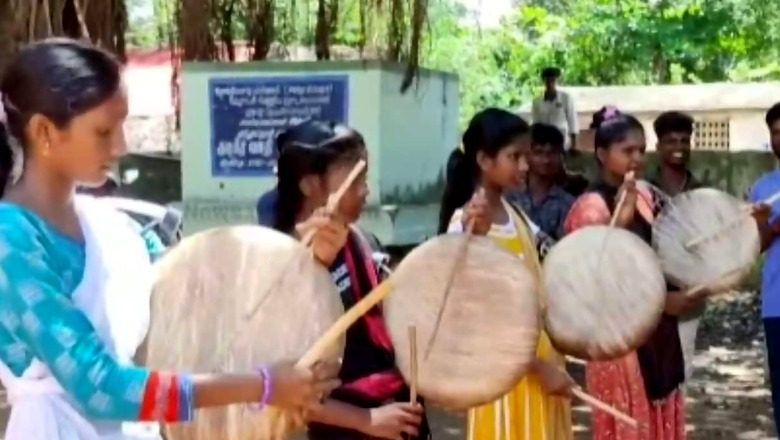
views
The cultural heritage of Tamil Nadu is deeply rooted not only in its bustling cities and towns but also in the quiet, remote corners of its villages. Folk arts are connected to the land of Tamil Nadu, serving as excellent tools for social development and mental upliftment. Anbarasan, a young man from Kappur village in Villupuram district, teaches the traditional arts he has learned to other interested students for free. While speaking to Local18, Anbarasan, he said, “I have completed an MA in English Literature and an MEd. I have been working as a school management committee consultant for two years. I have 17 years of experience in the field of arts and am currently running the Anbu Folk Arts Group. Our group teaches 18 types of arts, including Parai attam, Karakattam, Kazhi aattam, Oyilattam, Kavadi attam, Maankombuattam, and Bharatanatyam.”
“In today’s era, young people and students live surrounded by technology, seeing traditional arts only on WhatsApp or Facebook. They see traditional arts only as photographs in books. It is the students living in the village who can bring these arts to the outside world, so we provide the arts to them for free,” said Anbarasan.
“I am currently travelling to many villages, teaching traditional arts for free. Interested students are learning these arts. These traditional arts greatly help students in the government-sponsored arts festivals. I will teach these traditional arts for free as much as I can,” he further stated.
The art forms of Tamil Nadu, which have origins tracing back to ancient times, continue to be practised and performed with great enthusiasm and devotion today. These traditional arts, encompassing a wide range of styles and expressions, reflect the region’s historical depth and the enduring commitment of its people to preserving their cultural legacy. Through festivals, community gatherings, and dedicated teaching, the vibrant arts of Tamil Nadu remain a living testament to the state’s historical and cultural richness.

















Comments
0 comment